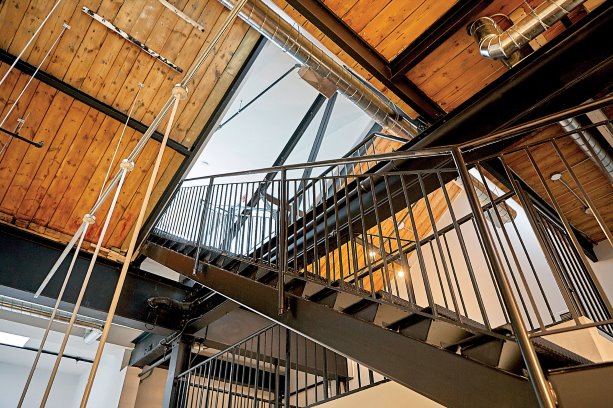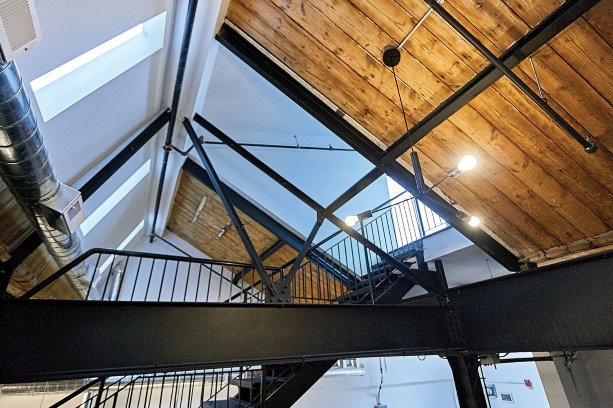It may be more of an option than an overall trend in the construction industry, says one developer, who has learned that steel should be left exposed in industrial loft conversions rather than boxing it in.
Not only are renovation costs reduced, the inherent beauty of steel can be harnessed as a marketing feature in industrial loft projects, says Vip Jain, a partner with Atria Development.
Atria is the developer of the i-Zone, an early 1900s industrial building in east-end Toronto which it purchased and rehabilitated a few years ago. For a time it was a rental building but the developer has turned it into a live/work condominium.
A major feature of the building is its steel beams which vary from small six-inch C channels to 22-inch I-beams.
"The steel is as structurally intact as the day it was installed. These old industrial buildings were overbuilt."
Most of those beams, however, have been enclosed for fire separation. But that building practice began to change late last year when Jain was selling one of the last remaining units.
"We would have appreciated it, if you had left steel exposed," Jain recalls the prospective clients telling him.
Eventually the young family did purchase the unit where the steel serves both as an architectural and structural feature. A bedroom on a second level is supported by the original beams.
A major factor in Atria Development’s decision to comply with their request was that the cost of intumescent paint has come down substantially in the past few years, he says.
In this particular unit, the painting contractor applied a Sherwin Williams product called Firetex FX5120 waterbased intumescent coating.
"It dries in an hour, provides a two-hour fire separation, and only one coat is required if the painter is a true professional," says Jain, cautioning that some preparation work is necessary.
"If the steel is painted, it must be sandblasted first. To use intumescent paint the surface of the steel should be clean and can’t be covered with dirt, grease or paint. If the steel is bare, it must be primed with direct-to-metal paint and then the Firetex can be directly applied."
Still, there were and are significant cost and time savings. The estimated sandblasting/painting for the unit was $3 per square foot compared to $5.50 per-square-foot for boxing in the beams in another unit which was renovated last fall. The work was also completed in about one-third the time, he says.
When steel is left exposed, the extra space saved only amounts to a few inches and that space in itself isn’t much of a marketable feature, says Jain.
"However, when you are introducing lofts and second-floor mezzanines every little inch counts. Additionally, home owners love the original beams because they add character to the overall look. It’s the style of the exposed beams which becomes a marketing and selling feature."
Increasingly, purchasers are looking for the "industrial esthetic" in finishes in high-ceiling spaces. By leaving steel uncovered, developers such as Atria are preserving the historical look, he points out.
"Whenever we have the opportunity we will now use the intumescent paint in our projects," he says.
When asked what lessons Atria’s experiment with intumescent paint can provide for the development and contracting industries, Jain says that the industry doesn’t always look closely at new technologies for cost efficiency solutions.
Looking beyond industrial to residential conversions, intumescent paint can be sprayed on the underside of steel pans and beams where beams have been traditionally closed in with drywall or sprayed with a rockwool/cementatious material, he says.




Recent Comments
comments for this post are closed